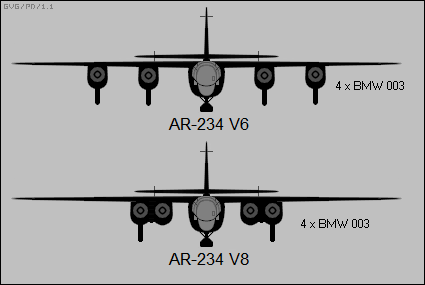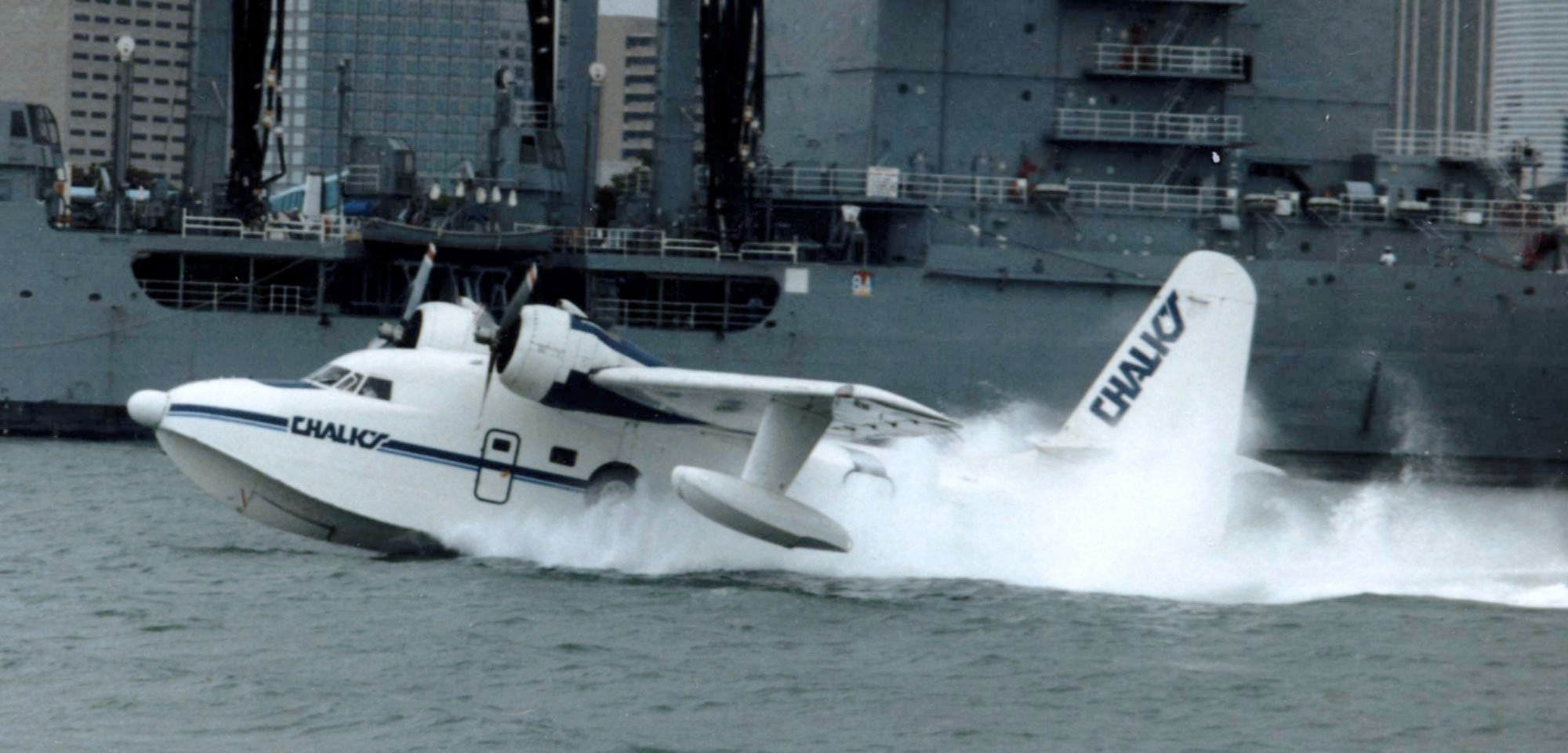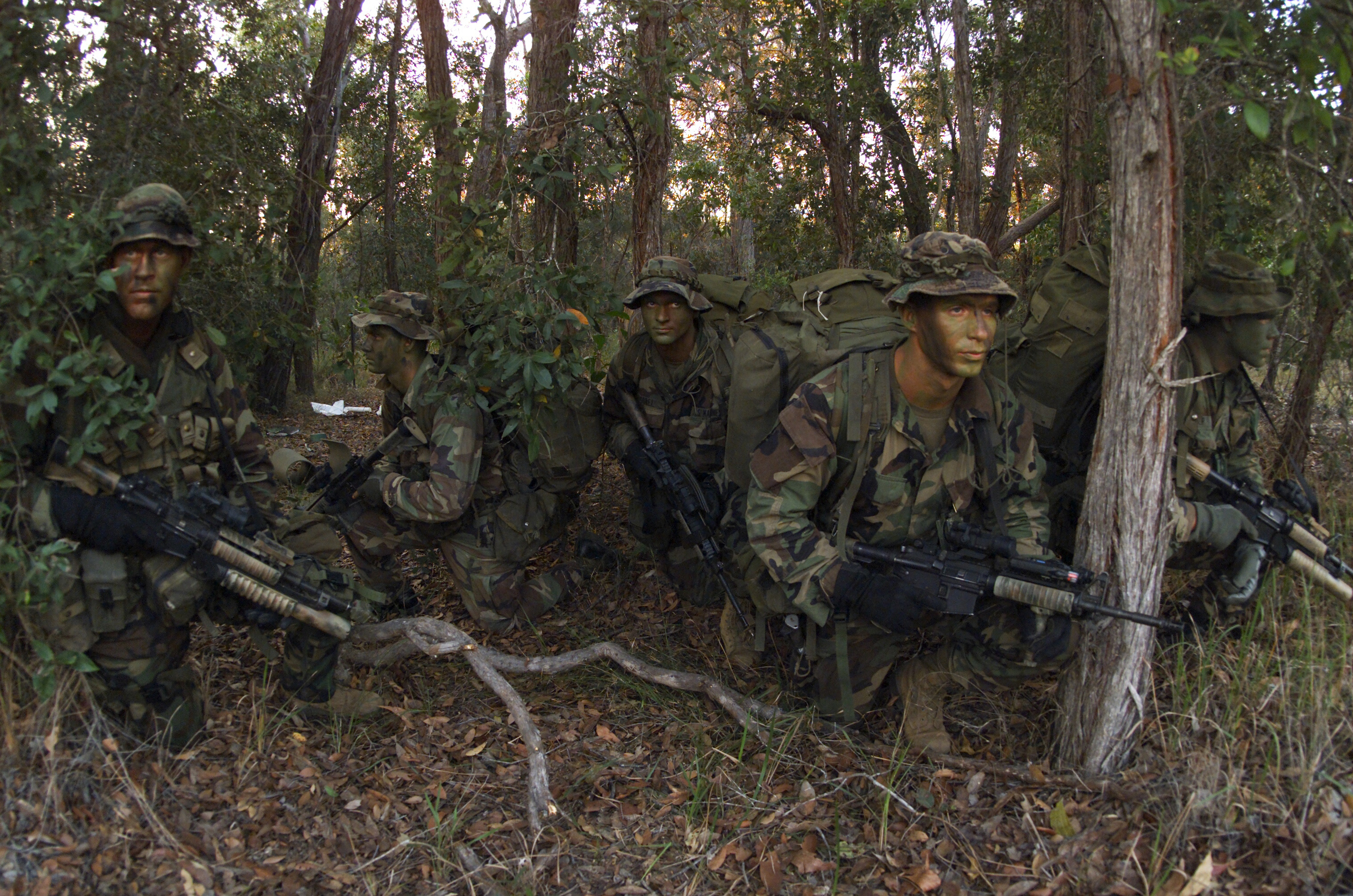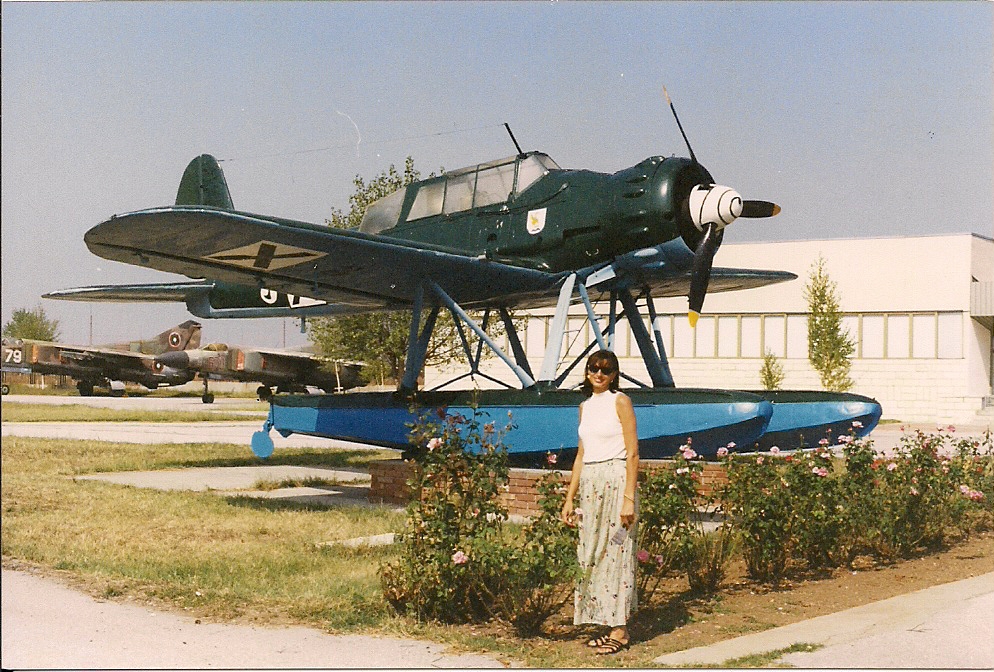|
Arado Flugzeugwerke
Arado Flugzeugwerke was a German aircraft manufacturer, originally established as the Warnemünde factory of the Flugzeugbau Friedrichshafen firm, which produced land-based military aircraft and seaplanes during the First and Second World Wars. History With its parent company, it ceased operations following the First World War, when restrictions on German aviation were created by the Treaty of Versailles. In 1921, the factory was purchased by Heinrich Lübbe, who is said to have assisted Anthony Fokker in the creation of the pioneering ''Stangensteuerung'' synchronization gear system during 1914-15, and re-commenced aircraft construction for export. Walter Rethel, previously of Kondor and Fokker, was appointed head designer. In 1925, the company joined the Arado Handelsgesellschaft ("Arado trading firm") that was founded by the industrialist Hugo Stinnes Jr. for covering up illegal trade with military equipment. When the Nazi government came to power in Germany in 1933, Lübb ... [...More Info...] [...Related Items...] OR: [Wikipedia] [Google] [Baidu] |
Warnemünde
(, literally ''Mouth of the Warnow'') is a seaside resort and a district of the city of Rostock in Mecklenburg-Vorpommern, Mecklenburg, Germany. It is located on the Baltic Sea and, as the name implies, at the estuary of the river Warnow (river), Warnow. is one of the List of busiest cruise ports by passengers, world's busiest cruise ports. History Founded in about 1200, was for centuries a small fishing village with minor importance for the economic and cultural development of the region. In 1323 lost its autonomous status as it was purchased by the city of Rostock in order to safeguard the city's access to the Baltic Sea. It was not until the 19th century that began to develop into an important seaside resort. Today has approximately 8,400 inhabitants. Economy Once completely dependent on the fishing industry, 's economic alignment has shifted inevitably from the primary to the secondary and tertiary sector. Besides the Nordic Yards Warnemünde ship yard (the forme ... [...More Info...] [...Related Items...] OR: [Wikipedia] [Google] [Baidu] |
Arado Ar 65
The Arado Ar 65 was the single-seat biplane fighter successor to the Ar 64. Both looked very similar. The only major difference was the use of a 12-cylinder inline engine versus the Ar 64's radial. The wingspan was also increased. The Ar 65 appeared in 1931 and six models were built. The first three 65a-c were prototypes, while the 65d-f were production models. The Ar 65d was delivered in 1933 and served alongside the Ar 64 in the two fighter groups - ''Fliegergruppe'' Döberitz and ''Fliegergruppe'' Damm. In 1935, the Ar 65 was reduced to a training aircraft. Production of the fighter was discontinued in 1936. However, the next year, 12 of them were presented to Germany's ally - the Royal Bulgarian Air Force. The final production total was 85 aircraft. Variants ;Ar 65a: Prototype, powered by a 559 kW (750 hp) BMW VI 7.3 12-cylinder water-cooled engine. First flight in 1931. ;Ar 65b: Prototype, similar to the 65a but with minor structural changes. ;Ar 65c: Prototype ... [...More Info...] [...Related Items...] OR: [Wikipedia] [Google] [Baidu] |
Arado Ar 234
The Arado Ar 234 ''Blitz'' (English: lightning) is a jet-powered bomber designed and produced by the German aircraft manufacturer Arado. It was the world's first operational turbojet-powered bomber, seeing service during the final years of the Second World War. Development of the Ar 234 can be traced back to the latter half of 1940 and the request to tender from the Ministry of Aviation to produce a jet-powered high-speed reconnaissance aircraft. Arado was the only respondent with their ''E.370'' design. While its range was beneath that of the Ministry's specification, an initial order for two prototypes was promptly issued to the company, designated ''Ar 234''. While both of the prototypes had been mostly completed prior to the end of 1941, the Junkers Jumo 004 turbojet engines were not available prior to February 1943. Due to engine unreliability, the maiden flight of the Ar 234 V1 was delayed until 30 July 1943. In addition to the original reconnaissance-orientated ''Ar 234 ... [...More Info...] [...Related Items...] OR: [Wikipedia] [Google] [Baidu] |
Heinkel He 177
The Heinkel He 177 ''Greif'' (Griffin) was a long-range heavy bomber flown by the ''Luftwaffe'' during World War II. The introduction of the He 177 to combat operations was significantly delayed by problems both with the development of its engines and frequent changes to its intended role. Nevertheless, it was the only long-range, heavy bomber to become operational with the ''Luftwaffe'' during the conflict. The He 177 had Payload#Relationship of range and payload, a payload/range capability similar to that of four-engined heavy bombers used by the Allies in the Western Front (World War II), European theatre. Work on the design began in response to a 1936 requirement known as Bomber A, issued by the Ministry of Aviation (Nazi Germany), ''Reichsluftfahrtministerium'' (RLM) for a purely strategic bomber. Thus, the He 177 was intended originally to be capable of a sustained bombing campaign against Soviet Union, Soviet manufacturing capacity, Ural economic region, dee ... [...More Info...] [...Related Items...] OR: [Wikipedia] [Google] [Baidu] |
Heavy Bomber
Heavy bombers are bomber Fixed-wing aircraft, aircraft capable of delivering the largest payload of air-to-ground weaponry (usually Aerial bomb, bombs) and longest range (aeronautics), range (takeoff to landing) of their era. Archetypal heavy bombers have therefore usually been among the largest and most powerful Military aviation, military aircraft at any point in time. In the second half of the 20th century, heavy bombers were largely superseded by strategic bombers, which were often even larger in size, had much longer ranges and were capable of delivering nuclear bombs. Because of advances in Aerospace engineering, aircraft design and engineering — especially in Aircraft engine, powerplants and aerodynamics — the size of payloads carried by heavy bombers has increased at rates greater than increases in the size of their airframes. The largest bombers of World War I, the ''Riesenflugzeuge'' of Germany, could carry a payload of up to of bombs; by the latter half of World ... [...More Info...] [...Related Items...] OR: [Wikipedia] [Google] [Baidu] |
Seaplane
A seaplane is a powered fixed-wing aircraft capable of takeoff, taking off and water landing, landing (alighting) on water.Gunston, "The Cambridge Aerospace Dictionary", 2009. Seaplanes are usually divided into two categories based on their technological characteristics: floatplanes and flying boats; the latter are generally far larger and can carry far more. Seaplanes that can also take off and land on airfields are in a subclass called amphibious aircraft, or amphibians. Seaplanes were sometimes called ''hydroplanes'', but currently this term applies instead to Hydroplane (boat), motor-powered watercraft that use the technique of Planing (boat), hydrodynamic lift to skim the surface of water when running at speed. The use of seaplanes gradually tapered off after World War II, partially because of the investments in airports during the war but mainly because landplanes were less constrained by weather conditions that could result in sea states being too high to operate seaplanes ... [...More Info...] [...Related Items...] OR: [Wikipedia] [Google] [Baidu] |
Reconnaissance
In military operations, military reconnaissance () or scouting is the exploration of an area by military forces to obtain information about enemy forces, the terrain, and civil activities in the area of operations. In military jargon, reconnaissance is abbreviated to ''recce'' (in British, Canadian, Australian English) and to ''recon'' (in American English), both derived from the root word ''reconnoitre'' / ''reconnoitering''. The types of reconnaissance include patrolling the local area of operations and long-range reconnaissance patrols, which are tasks usually realized in the United States of America by U.S. Army Rangers, cavalry scouts, and military intelligence specialists, using navy ships and submarines, Aerial reconnaissance, reconnaissance aircraft, satellites to collect raw intelligence; and establishing observation posts. Moreover, espionage is different from reconnaissance, because spies work as civilians in enemy territory. Etymology The word is derived from the ... [...More Info...] [...Related Items...] OR: [Wikipedia] [Google] [Baidu] |
Arado Ar 196
The Arado Ar 196 is a shipboard reconnaissance low-wing monoplane aircraft designed and produced by the German aircraft manufacturer Arado. It was the standard observation floatplane of the ''Kriegsmarine'' (German Navy) throughout the Second World War, and was the only German seaplane to serve throughout the conflict. The Ar 196 was designed in response to the Kriegsmarine's requirement to replace the Heinkel He 60 biplane after the intended successor, the He 114, had proved to be unsatisfactory. Arado submitted a monoplane design to the '' Reichsluftfahrtministerium'' (German Air Ministry, RLM) while all competing bids were for biplanes; the RLM decided to order four prototypes of the Ar 196 in late 1936. Testing of these prototypes during late 1937 revealed their favourable performance characteristics, leading to production being authorised and formal service tests commencing in the opening weeks of 1939. Starting in November 1939, production switched to the heavier land-b ... [...More Info...] [...Related Items...] OR: [Wikipedia] [Google] [Baidu] |
Arado Ar 96
The Arado Ar 96 was a single-engine, low-wing monoplane of Aluminium, all-metal construction, designed and produced by the Nazi Germany, German aircraft manufacturer Arado Flugzeugwerke. It was the ''Luftwaffe''s standard advanced Trainer (aircraft), trainer throughout the Second World War. The Ar 96 was designed during the mid-1930s in response to a requirement issued by the Reichsluftfahrtministerium (RLM/German Aviation Ministry) for a modern trainer. Arado produced a new design suitable for conducting various forms of training, including advanced flying, aerobatics, aerial reconnaissance, night flying, and radio operator training. Various trainee-friendly features were present, including aerodynamically balanced flight control surfaces, widely-set landing gear, and automatically deploying Flap (aeronautics), flaps. In late 1936, the first prototype was completed; five more prototypes followed with various improvements, such as the use of a more powerful engine, Variable-pitch ... [...More Info...] [...Related Items...] OR: [Wikipedia] [Google] [Baidu] |
IdFlieg
The Idflieg (''Inspektion der Fliegertruppen'' - "Inspectorate of Flying Troops") was the bureau of the German Empire that oversaw German military aviation prior to and during World War I. Founded in 1911, the Idflieg was part of the ''Fliegertruppen des deutschen Kaiserreiches'' (Imperial German Flying Corps) which became the ''Luftstreitkräfte'' in 1916, handling administration, including regulation of service names applied to aircraft produced by domestic companies, characterised according to the armament, wing configuration, crew and role which was intended for the aircraft. Inspectors of Flying Troops * Colonel Walter von Eberhardt (1913–1914) * Major Richard Roethe (1914–1916) * Major, later Lieutenant-Colonel Wilhelm Siegert (1916–1918) * Captain Wilhelm Haehnelt (1918–1919) See also * Idflieg aircraft designation system The '' Idflieg'' (Inspektion der Fliegertruppen/Inspectorate of Flying Troops) designation system was used to classify German heavier-th ... [...More Info...] [...Related Items...] OR: [Wikipedia] [Google] [Baidu] |
Felix Wagenführ
Felix may refer to: * Felix (name), people and fictional characters with the name Places * Arabia Felix is the ancient Latin name of Yemen * Felix, Spain, a municipality of the province Almería, in the autonomous community of Andalusia, Spain * St. Felix, Prince Edward Island, a rural community in Prince County, Prince Edward Island, Canada. * Felix, Ontario, an unincorporated place and railway point in Northeastern Ontario, Canada * St. Felix, South Tyrol, a village in South Tyrol, in northern Italy. * Felix, California, an unincorporated community in Calaveras County * Felix Township, Grundy County, Illinois * Felix Township, Grundy County, Iowa Music * Felix (band), a British band * Felix (musician), British DJ * Felix (rapper) (born 2000), Australian rapper and member of the K-pop boy band Stray Kids * Félix Award, a Quebec music award named after Félix Leclerc Business * Felix (pet food), a brand of cat food sold in most European countries * AB Felix, a ... [...More Info...] [...Related Items...] OR: [Wikipedia] [Google] [Baidu] |
Erich Serno
The given name Eric, Erich, Erikk, Erik, Erick, Eirik, or Eiríkur is derived from the Old Norse name ''Eiríkr'' (or ''Eríkr'' in Old East Norse due to monophthongization). The first element, ''ei-'' may be derived from the older Proto-Norse ''* aina(z)'', meaning "one, alone, unique", ''as in the form'' ''Æ∆inrikr'' explicitly, but it could also be from ''* aiwa(z)'' "everlasting, eternity", as in the Gothic form ''Euric''. The second element ''- ríkr'' stems either from Proto-Germanic ''* ríks'' "king, ruler" (cf. Gothic ''reiks'') or the therefrom derived ''* ríkijaz'' "kingly, powerful, rich, prince"; from the common Proto-Indo-European root * h₃rḗǵs. The name is thus usually taken to mean "sole ruler, autocrat" or "eternal ruler, ever powerful". ''Eric'' used in the sense of a proper noun meaning "one ruler" may be the origin of ''Eriksgata'', and if so it would have meant "one ruler's journey". The tour was the medieval Swedish king's journey, when newly ele ... [...More Info...] [...Related Items...] OR: [Wikipedia] [Google] [Baidu] |






